Visit Ostend in 2 days
20 must-see POIs, optimized routes and anecdotes.
Loading map...
You will visit the most beautiful points of interest in Ostend
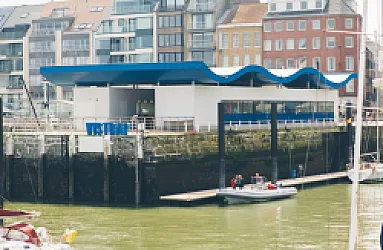
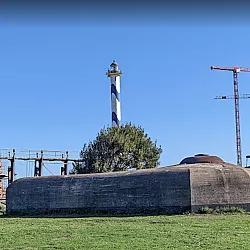

.jpg/320px-PPkerk(01).jpg)

.jpg/320px-Oostende.bloemenuurwerk(01).jpg)
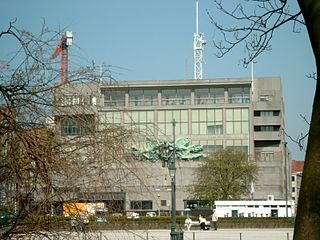


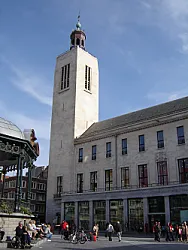






2 Days in Ostend — Coastal charms and hidden stories
Ostend stole my heart the moment I smelled salty air and heard gulls argue above the promenade. Often called the "Queen of the Belgian sea," the city mixes seafaring grit with surprising elegance. Some say it's overrated, but I found its quiet piers and lively fish stalls utterly irresistible. I visited with a small backpack and a big appetite for discovery, and I left feeling like I had found a secret friend.
Why visit Ostend? Beyond the headline sights, it's a city of textures and moments. You will wander from wind-swept beaches to intimate museum rooms. Taste fresh shrimp croquettes at a seaside stand. Hear the creak of wooden decks on the Mercator and feel history under your feet at the National Monument to the Sailors. The Vistrap market pulses with color and chatter. This short trip promises brisk sea air, cozy cafés, and the odd unexpected sculpture that stops you in your tracks.
Planning can feel overwhelming. There is so much to see that you could easily stay for weeks. If you're visiting for the first time, you might worry about missing the highlights. I get it. Time is tight and choices feel heavy. That’s why this concise Ostend itinerary is built for people who want to taste the best parts quickly. Below, I’ll show you exactly how to spend two days to maximize your time and feel like you really experienced the city.
Key tip: Visit outdoor highlights early or late in the day to avoid crowds and catch the best light. Mornings give empty promenades and softer photos. Evenings bring golden light on the Mercator and quieter waterfront dinners. This matters because pacing matters here; you want to savor, not rush. Pack a light jacket, wear comfortable shoes, and bring curiosity. Now let's dive into the itinerary!

Quick Mini Guide to Ostend
Where to stay:
- Promenade / Kursaal area — immediate beach access, evening restaurants and the Equestrian statue of King Leopold I within short walk.
- Near Vistrap (harbour) — best for early-morning fish market atmosphere and seafood stalls.
When to visit:
- Late spring–early autumn for beach weather; shoulder months (May, September) for fewer crowds and calmer winds.
- Mornings for Vistrap activity and afternoons for Mercator ship and seaside promenades.
Things to do:
- Vistrap fish market — arrive early to watch landings, buy fresh North Sea shrimp and mussels.
- Walk the seawall to the National Monument to the Sailors for sunset views and maritime history.
- Visit the Mercator (historic training ship) moored as a museum; combine with the nearby Equestrian statue of King Leopold I photo stop.
- See the Altar in St. Peter and St. Paul’s Church — notable local religious art and architecture.
- Book an interactive tour: Secrets of OSTEND for local stories or The Walter Case OOSTENDE for a detective-style evening investigation.
Don't forget:
- Windproof jacket and layered clothes — coastal weather changes fast.
- Cash/coins for market stalls, and comfortable shoes for cobbled streets and pier walks.
Day 1 - Ostend
10 POIs to discoverDay 1 - Morning à Ostend
5 Points of interest - Duration : 4h15 - Distance : 1.6 km - Walking : 0h21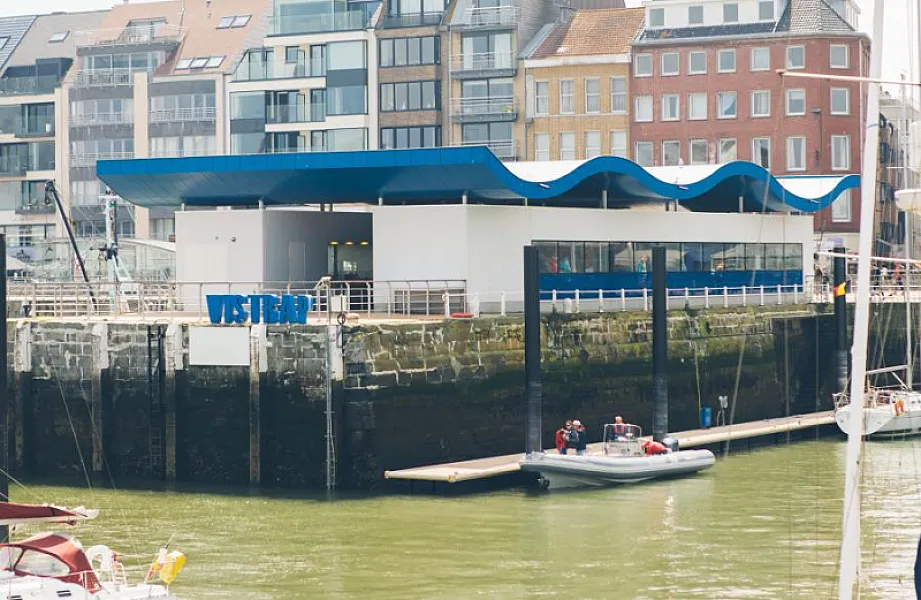
Vistrap
- De Vistrap is an open-air fish market situated on the northern quay of the harbor.
- It originated during the 19th century as the harbor expanded.
- During the construction of the docks around 1850, a staircase was built to directly access the arriving fishing boats.
- This spot, known as 'de vistrap' (= the fish stairs), allowed fishermen to sell their catch and contributed to the charm of Oostende's waterfront.
- The ‘Stadsmuseum’, housed in the former residence of Leopold I, showcases the harsh living conditions and exploitation experienced by the fishermen in the late 19th century, despite Ostend being one of Europe's major ports.
- The Vistrap underwent renovation in 2006 to comply with new regulations from the Federal Food Agency.
- The renovation focused mainly on the vendors' spaces, replacing wooden and rough stone display areas with blue stone, granite, or stainless steel.
- In May 2015, the old vistrap was demolished and replaced with a new building, completed in April 2016.
- During this period, the fish market operated from beach cabins.
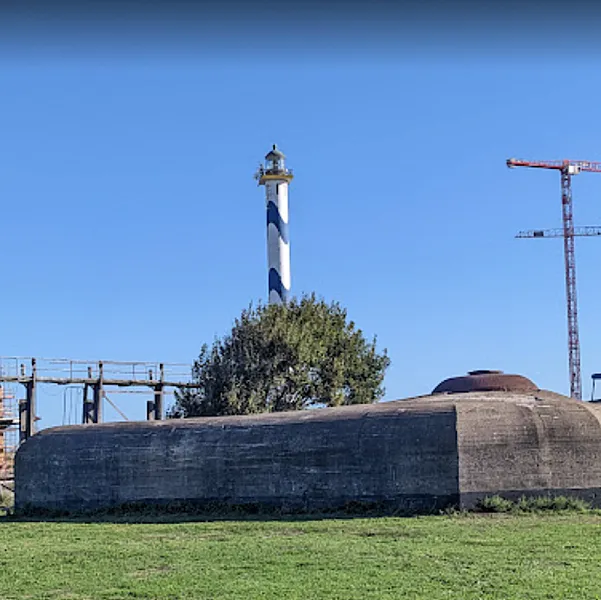
German Bunker - Regelbau 633
- The bunker was named R633 after its standard construction plan or "Regelbau" number.
- It currently serves as a cloakroom for the lock guards.
- It is one of only 21 bunkers of this type ever built, and is also the only one in Belgium.
- Its primary objective was to fire on the beach, the Hundius battery, the Flak site, the Schnellboot bunker and the entire port area.
- It was equipped with a 50 mm mortar with a maximum range of 750 m, housed under an armoured steel turret (the mortar is now missing).
- It served as accommodation for 15 soldiers, an ammunition store for mortar shells and a workshop.
Station OOSTENDE
- The first station opened in 1838, and the current neoclassical station was built in 1913, connecting trains and ferries, using materials like Scottish granite, bluestone, and limestone. Oostende station is a major hub, with InterCity trains connecting to Brugge, Gent-Sint-Pieters, Brussels-South, Liège-Guillemins, Antwerpen, Kortrijk, and more. Oostende serves as a major hub for the Kusttram, the coastal tramway run by De Lijn. Regie voor Maritiem Transport used to operate ferries connecting to the Port of Dover, but these services ceased in 1994.
.jpg)
Sint-Petrus-en-Pauluskerk
- The Sint-Petrus-en-Pauluskerk was built to replace the Sint-Pieterskerk, which was destroyed by fire on August 14, 1896.
- King Leopold II had plans for the church's construction, but faced resistance from the then dean.
- Rumors suggested the king might know more about the fire that destroyed the previous church.
- The new church was built in Neo-Gothic style between 1899 and 1905.
- It was designed by Louis Delacenserie, the city architect of Bruges.
- The church was made of limestone from the Maas region (pierre de Meuse), a type of stone that was also used by the Romans for their villa construction.
- The church, which is 70 meters long and 36 meters wide, has a floor plan based on the Latin cross, with the central nave slightly higher than the two side aisles.
- The church was solemnly inaugurated on September 4, 1905 in the presence of King Leopold II and numerous dignitaries, but was not consecrated until August 31, 1908 by the Bishop of Bruges, Waffelaert.

Amandine
- The 'O.129 Amandine' is a large stroke trawler launched in 1962, fishing in South Iceland during summer and the Channel and North Sea in winter.
- In 1974, the Amandine transitioned into a real Icelandic vessel.
- On April 3, 1995, the 'Amandine' made its last voyage to Ostend, marking the end of Iceland's fishing industry in the region.
- On May 14, 2000, the ship was placed on dry land in front of the station using two large cranes during the first edition of Ostend at Anchor.
- Shipbuilder Richard Panesi initially disapproved, considering it a disgrace, but later acknowledged the good job done on the ship.
- The 'Amandine' now serves as a museum about Icelanders, but is currently closed for renovation.
Day 1 - Afternoon à Ostend
5 Points of interest - Duration : 3h45 - Distance : 1.1 km - Walking : 0h14National Monument to the Sailors
- This National Monument for the Mariners is a tribute to the fishermen, sailors, and soldiers who lost their lives at sea.
- It was designed by Willy Kreitz and erected in 1953-1954 on the site of the old Oostende lighthouse The monument portrays a sailor at the top gazing confidently towards the sea, a grieving sailor below, and bronze anchors with inscriptions on the sides.
- The positioning of the two sailor statues creates an interactive element with the nearby sea.
- A yearly sea blessing ceremony takes place at the monument, where a prayer service and blessings over the sea are offered from a Belgian navy ship.

Casino Kursaal Ostend
- The first 'Kursaal' in Ostend was established in the city hall in the early 19th century.
- It had a large hall used for concerts and balls, but it was eventually deemed too small.
- In 1852, a new kursaal building was constructed on the "Wapenplein".
- It was a temporary wooden structure designed by architect Hendrik Beyaert and featured a concert hall and outdoor kiosks for concerts.
- Due to space constraints, the kursaal underwent renovations in 1858 and 1865.
- The 1865 renovation included a new glass-roofed feest- en concertzaal (festive and concert hall).
- A second kursaal was built in a different location in 1883.
- Designed by Felix Laureys and Joseph Naert, it had a classicist-eclectic style and featured concerts and recitals for two decades.
- Extensive renovations took place between 1898 and 1906 under the architect Alban Chambon.
- The building was gradually reconstructed each year during the winter season, resulting in a lavish interior with marble, wood, granite, and mosaic decorations.
- The kursaal was destroyed during World War II by German occupiers, who replaced it with gun emplacements and a bunker complex.
- The current Casino-Kursaal Oostende, the third kursaal, was rebuilt after the war based on a modernist design by architect Léon Stynen.
- It incorporated curved glass facades and innovative construction techniques such as reinforced concrete.
- The Casino Ostend, the gambling area, is located within the Kursaal but operates independently.

Lafayette Music Bar
- Lafayette is known for its diverse music offerings, including soul, blues, jazz, reggae, ska, chansons, popcorn and a selection of rock & pop classics - Soul Ostendaise. They have up to 69 beers and tot 62 types of spirits, 14 different cocktails They are open 7 nights a week !

Wapenplein
- This square was constructed in the 15th century, and is the oldest square of Ostend The city hall was destroyed by the English in 1489 but was rebuilt in 1496.
- After the siege of Ostend in 1601-1604, a new city hall was built on the south side of the Wapenplein square, following its current layout.
- The city hall was again destroyed during the English siege of Ostend in 1706 and was replaced by a new building designed by Augustijn J.
- In 1887, a large casino hall and the Museum of Fine Arts were established within the city hall premises.
- In the late 19th century, the Kiosk was built following a petition by residents to have a permanent music building on the square.
- Designed by architect Theobald Van Hille, the Kiosk exhibits an eclectic style, featuring eight slender cast-iron columns and balustrades from a previous Kiosk to improve acoustics.
- The four liers on the dome are dedicated to composers Grétry, Wagner, Rossini, and Gounod.
- Despite the destruction caused by World War II in the city, the Kiosk remained intact and was later protected as a recognized monument in 1981.
- The Kiosk enjoyed its prime during the summer months from 1898 until the 1960s, hosting a popular music festival called the "Festival Permanent" with performances by local and foreign music bands.
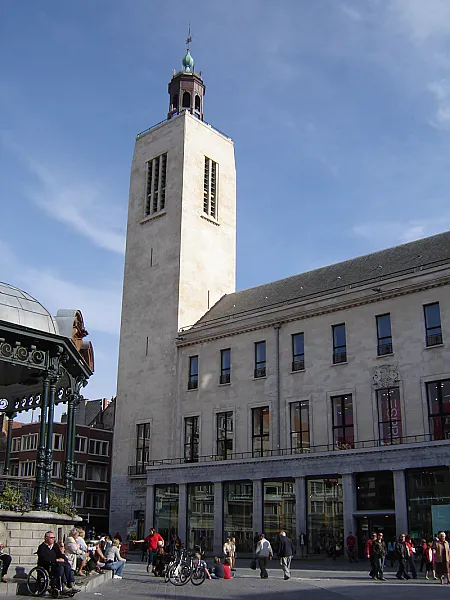
Feest- en Kultuurpaleis
- The Feest- en Kultuurpaleis opened after a major renovation in March 2007 and houses 17 shops, including some branches of large international store chains.
- The oldest traces of a town hall in this area date back to 1418.
- After its destruction during the War, the town hall was rebuilt seven years later.
- In 1837, some rooms of the town hall were converted into a casino.
- By 1861, a library was also established in the building.
- During the Second World War, both the town hall and library were completely destroyed along with the city archive.
- A new building was approved for construction in November 1954 on the grounds of the destroyed town hall.
- It contained a reception hall, party hall, library, museum, and a small theater hall.
- A new carillon, consisting of 49 bronze bells, was installed in 1965 after the old one was destroyed during the Second World War.
- The largest bell, named Leopold I, weighs 2250 kg.
Day 2 - Ostend
10 POIs to discoverDay 2 - Morning à Ostend
5 Points of interest - Duration : 4h00 - Distance : 1.8 km - Walking : 0h23
Mercator
- The Mercator is a museum ship.
- It was built in 1932 at Ramage and Ferguson Ltd in Leith, Scotland.
- The ship was launched on September 5, 1932, and became operational on the same day.
- Its homeport is Oostende.
- The Mercator is owned by the Belgian State.
- It is a three-masted barkentine, serving as a training ship.
- The ship is 78.40 meters long, 11.09 meters wide, and has a draft of 4.50 meters.
- It has a displacement of 778.86 tons and is powered by a 500 horsepower auxiliary engine.
- The Mercator has 15 sails with a total area of 1600 m², enabling a speed of 13 knots (24 km/h).
- The ship had a crew of 150 members.
- The Mercator served as a sailing ambassador, participated in races, and transported notable items, including two "moai" from Easter Island and the remains of Father Damien.
- During World War II, the ship was requisitioned by the British Admiralty and used as a submarine depot ship.
- Since 1961, the Mercator has been converted into a museum ship and has been moored in Ostend, except for a few trips.

Equestrian statue of King Leopold I
- The bronze statue of King Leopold I was unveiled in 1901 in the presence of King Leopold II, Princess Clementina, and Prince Albert.
- The statue features a slightly bowed head of the horse and a rotating movement of the king, adding a dramatic touch to its appearance.
- The statue is believed to be the oldest surviving structure on the square, as the original houses have been replaced by modern apartment buildings.
- King Leopold II inaugurated the monument in 1905 with grandeur.
- In 1867, the statue of Leopold I, along with the statue of Ambiorix from Tongeren, was showcased at the World Exhibition in the Belgian Garden in Paris.
Town Hall of Ostend
- The old Town Hall and city archive of Ostend burned down during World War II on the night of May 27-28, 1940.
- The construction of the new Town Hall of Ostend began in 1956 on a different site.
- Architect Victor Bourgeois designed the new Town Hall, while the interior was done by the art workshop De Coene.
- The city services were temporarily housed in the new courthouse during the construction of the Town Hall.
- The entire complex was officially inaugurated and put into use in 1961.

De Grote Post
- � This former central post building in Ostend, known as 'De Grote Post' (= The Big Post), was designed by architect Gaston Eysselinck and completed in 1953.
- The new replaced the previous post building, which was destroyed during World War II and was located in the same place.
- The construction of the post-war building started in September 1947 and faced delays and issues.
- The decision not to execute a sculpture by Jozef Cantré, which was considered integral to the building by the architect, caused controversy.
- The sculpture was eventually added ten years later in 1963.
- The building underwent restoration and renovation in different phases, preserving the protected sections while incorporating new elements.
- It now houses theatre halls, spaces for exhibitions and workshops.
- Every summer, they also organise Theater at Sea (Theater Aan Zee=TAZ), a performing arts festival with performances in and around the Grote Post.
.jpg)
Leopoldpark
- The Leopold Park in Ostend was designed by Louis Fuchs in the style of an English park.
- The park was partially built on the old city walls. It was started in 1861 and completed in 1870.
- Two drinking pavilions were built in the park in 1859 after the discovery of two water sources.
- The park features a wooden music kiosk from 1885 where musical performances take place.
- A floral clock was installed in 1933 and is decorated with 15 million flowers and plants annually.
- The Leopold Park displays various artworks along a sculpture route, including allegorical heads by Leo Copers and the bronze sculpture "Hoop" by Jacky De Maeyer.
Day 2 - Afternoon à Ostend
5 Points of interest - Duration : 4h00 - Distance : 1.5 km - Walking : 0h20
Altar
- "Altar" is an art installation created by Kris Martin and is located on the beach of Ostend.
- The installation features an empty frame that serves as a 'window' to the sea.
- The view through the frame changes depending on the viewer's proximity to it, creating a dynamic tableau vivant.
- Altar was designed by Martin for the exhibition "De Zee" (The Sea) at the request of Jan Hoet.
- Kris Martin's work often involves transforming and reappropriating old objects.
- Kris Martin wants to use "Altar" to highlight Jan Hoet's fondness for the Mystic Lamb (Lam Gods) and indirectly refers to the St John's exhibition in 2012.
3 gapers
- The plan to honour King Leopold II with a monument in Ostend dates from shortly after his death in 1909.
- The statue was designed by sculptor Alfred Courtens and architect Antoine Courtens.
- The monument consists of a rising column with a bronze statue of Leopold II on horseback in military uniform, looking over the North Sea.
- In 2004, the hand of a Congolese statue was sawed off in protest against Leopold II by the action group "De Stoete Ostendenoare".
- In fact, this equestrian statue is a complete falsification of history: Leopold II did not free the Congolese from slavery under Arabs.
- On the contrary, he used the Congolese himself as slaves to work in the coffee and rubber plantations. Not only did a real genocide take place there, but slaves who did not work hard enough had their hands chopped off. .

Royal Galleries of Ostend
- The Royal Galleries are located on the seawall between the Royal Chalet and Wellington Racecourse.
- The colonnades are about 380 metres long and end on both sides in an enclosed pavilion with a lounge.
- The architecture of the paired Doric columns is inspired by Roman architecture from the time of Emperor Hadrian.
- The Royal Galleries were intended as a passage to the racecourse for King Leopold II and his distinguished guests, protecting them from the weather.
- The first phase of construction was financed by a grant the city of Ostend received as compensation for the abolition of games of chance.
- Leopold II financed part of the second phase from his personal fortune.
- Atop the centre and at the back of the Royal Galleries is the Thermae Palace Hotel, built in 1932-1933 by architect André-Louis Daniëls.
- The galleries are the setting for Léon Spilliaert's painting "La Nuit", part of the Belgian State's collection.

Villa Maritza
- Villa Maritza was built in 1885 to a design by architect Antoine Dujardin.
- It is one of the last remaining remnants of belle-époque architecture on the seafront.
- Antoine Dujardin was a prominent architect of the Second Eclectic Period and designed several luxury villas in Ostend.
- In 1996, Villa Maritza was listed as a protected monument.
- From 1986 to 2011, Villa Maritza functioned as a restaurant.
- In 2012, the building was bought by contractor Bart Versluys for a renovation project to support Ostend's cultural heritage.

Japanse Tuin
- The point of interest is a Japanese Garden named Shin Kai Tei, which means "Deep Sea Garden".
- The garden is located within the former park of the Royal Villa.
- Combining several landscapes, the garden depicts various aspects on a relatively small surface.
- The garden was designed by Takashi Sawano.
- A pond shaped like a turtle is a central feature of the garden.
- The garden was opened in 2001 by Prince Filip of Belgium and is freely accessible for walkers.
Where to Stay in Ostend
Where you stay in Ostend matters more than you might expect for a short two-day visit: choosing the right side of town saves precious hours and lets you soak up the sea air without wasting time in taxis. For a compact itinerary that includes the fish market, the historic ship and the seafront monuments, prioritize proximity over pretension — being a 10–15 minute walk from the main sights will turn a busy weekend into a relaxed one. Let your plan hinge on whether mornings on the beach or evenings in the center feel more important to you.
Ostend is pleasantly compact and easy to read: the long Albert I promenade frames the coast, a lively harbour and fish-dock area sits to one side, and the pedestrian city centre with shops, cafés and the main church fills the other. Most landmarks — the quay around the fish market, the statue-lined promenade with the National Monument to the Sailors and the museum ship the Mercator — are all within comfortable walking distance of each other. This tight layout means you can swap plans on the fly without losing half your day to travel.
If you want to be in the thick of the action choose a place near the quay and the Vistrap for early-morning fish markets and lively seafood stalls; it’s ideal if you want to begin days with local flavours. Staying on or just off the promenade near the monument keeps sunsets, the promenading crowd and the Mercator a short stroll away. For quieter evenings and easy access to the church with its notable altar (the city’s historic core and the equestrian statue of King Leopold I are here), pick the City Centre area where cafés and evening life are most concentrated.
Transport around Ostend is straightforward: the central train station sits a short walk from both beach and centre, the coastal Kusttram links neighbouring towns if you fancy a quick excursion, and local buses fill the gaps. If you’re driving, choose accommodation that mentions nearby parking; otherwise you’ll find most attractions walkable and bike rentals plentiful for a breezy alternative.
For two days, aim for convenience over frills. A seafront stay gives you sunrise and fresh air; a centre location keeps restaurants and evening sights within easy reach; a spot a little inland gives peace after a full day. Pick what will make your mornings easiest and evenings happiest, and you’ll leave Ostend feeling like you had time to breathe rather than rush. Safe travels — and enjoy the sea.
Getting Around Ostend
Ostend is wonderfully easy to navigate: it’s compact, flat, and served by a reliable network of De Lijn buses and the coastal Kusttram, with national trains run by SNCB/NMBS into Oostende station. Routes are frequent during the day, many stops are clearly signed in English, and the promenade makes walking between sights a pleasure. Whether you want the convenience of public transport or the fresh-air option of strolling between the harbour and the beach, you’ll find it straightforward and stress-free 🚇.
A practical tip about tickets will save you time: if you plan several short trips grab a day pass, otherwise single tickets work fine for one-offs. You can buy fares on board many buses and trams (card payments are usually accepted), at station machines, or through the De Lijn app and the SNCB app for trains. Don’t forget to validate your ticket or have it active — inspectors do check, and fines are real. Contactless payment is available on some services, which is handy if you prefer quick tap-and-go.
Google Maps is your friend here: it shows tram and bus lines, real-time departures, and walking directions that often combine a short tram ride with a scenic walk. For minute-by-minute accuracy the local De Lijn app can sometimes be better, but Google is excellent for planning door-to-door routes and comparing walking versus tram times 🗺️. I always double-check both if I’m on a tight schedule.
If you want to save money, mix walking with one or two tram hops instead of taking taxis. The coast is gorgeous and many POIs are within a comfortable walking radius, so you’ll save on fares and discover hidden cafés and views. A 24-hour ticket pays off fast if you plan museum visits, a harbour walk, and an evening stroll along the beach — plus it gives you the freedom to hop on and off the Kusttram for little detours.
Personal tip from experience: we arrived near Vistrap, checked the De Lijn app, and chose to walk to the National Monument to the Sailors because it was only about a ten-minute promenade — beautiful and direct. Later, tired and eager to reach the Altar, we bought a quick ticket on the tram, tapped with contactless, and hopped off a short ride later right by the site. The whole outing felt effortless: a little planning, a validated ticket, and you’ll move around Ostend like a local 🎫.
What to Pack for Ostend
Ostend is a compact, walkable city with wide promenades, grand architecture and manor houses to admire — and you’ll spend most of your time outdoors admiring sculptures and facades. I’ve done two-day stints here more than once: one trip I walked roughly 15 miles over two days and was out for 10+ hours each day taking photos, ducking into cafés and circling the seafront. Pack light but smart — here are the essentials that saved me stress and kept me comfortable.
1. Comfortable walking shoes (REQUIRED — e.g., Ecco Soft 7 or Merrell Moab 2): I learned this the hard way after a day on cobbles and promenade tiles — blisters shut my second afternoon down. A supportive shoe with good grip matters because you’ll cover long stretches between landmarks; on my 15-mile weekend, shoes with cushioning made the difference between enjoying a museum façade and limping back to the hotel.
2. Weather-appropriate clothing for Ostend (windproof layer + thin thermal): The North Sea wind bites even in late spring. On one chilly evening I was glad I’d packed a light windbreaker and a thin merino layer — without them I would have cut a planned manor-house walk short. You want layers: sun then breeze then possible spit of rain within a single afternoon.
3. Cross-body bag (anti-theft, water-resistant): I carry a small cross-body every time I travel coastal cities. Ostend’s esplanade and markets are crowded at peak times; having a zipped, close-to-body bag kept my wallet and phone safe while I photographed sculptures. It’s hands-free for sandwiches and maps, and I’ve never once worried about pickpockets when it’s snug against me.
4. Power bank (e.g., Anker 20,000 mAh): I was shooting architectural details and using maps all day — my phone would have died by noon without a 20,000 mAh bank. One of these typically gave me two full charges, so I could be out for 10+ hours taking photos and using transit apps without hunting for an outlet.
5. Travel power adapter (Type E for Belgium): Belgium uses Type E plugs (230V). On my first trip I forgot the adapter and wasted time at a hotel store — not fun when you need a charge before a late dinner. Bring a compact adapter so you can top up devices between explorations.
6. Optional: Packable umbrella or lightweight scarf: I alternate these depending on season. A tiny umbrella handled a sudden shower once; a large scarf doubled as a wind buffer and picnic blanket another time. Either one is small but can rescue a soggy or chilly afternoon by the sea.
Enjoy Your Trip to Ostend!
Packed with seaside charm and surprising culture, this two-day itinerary guides you through 15 must-see spots in Ostend. From the bustling Vistrap to the poignant National Monument to the Sailors and the sculptural Altar, you’ll get a taste of landmarks, historic architecture and lively urban life—everything you need for a short, unforgettable city break.
Remember, this is a GUIDE, not a rigid schedule—please leave room for the unexpected. The true magic of Ostend often happens in unplanned moments: getting pleasantly lost among manor houses, stumbling on a street sculpture, or lingering at a café for a view of the promenade. Don’t pressure yourself to see EVERYTHING; savor a slower pace and let spontaneous discoveries shape your two days.
I hope you feel excited to explore—the mix of landmarks, theatres and seaside moments is pure joy. I’m excited for you to stand at the National Monument to the Sailors, taste local life at Vistrap and admire the Altar at sunset. You’re going to love Ostend and create unforgettable memories!
Want to make discovery playful? Check out Coddy’s interactive, gamified tours—Secrets of OSTEND and The Walter Case OOSTENDE—to turn exploring into a small adventure. They’re a fun way to uncover hidden stories and solve clues while seeing the city.
Have questions or a story to share when you return? I’d love to hear about your favorite spots and photos. Safe travels! Have fun!
Want more adventure?
Discover our urban escape games to transform your visit into an interactive adventure!













